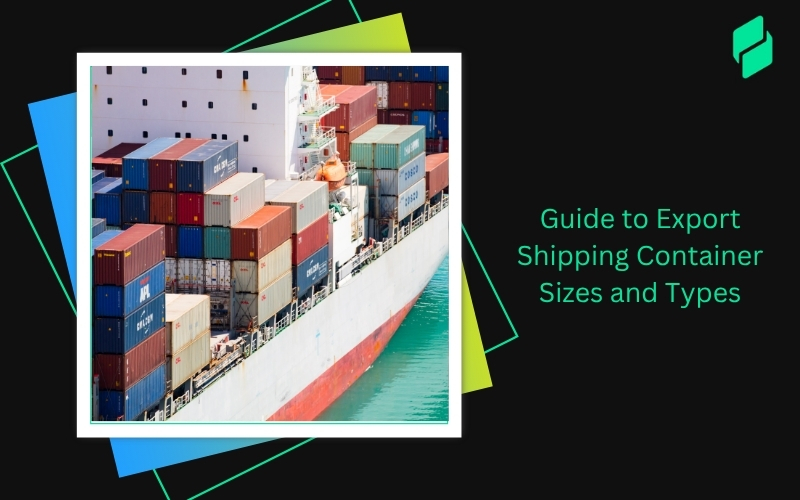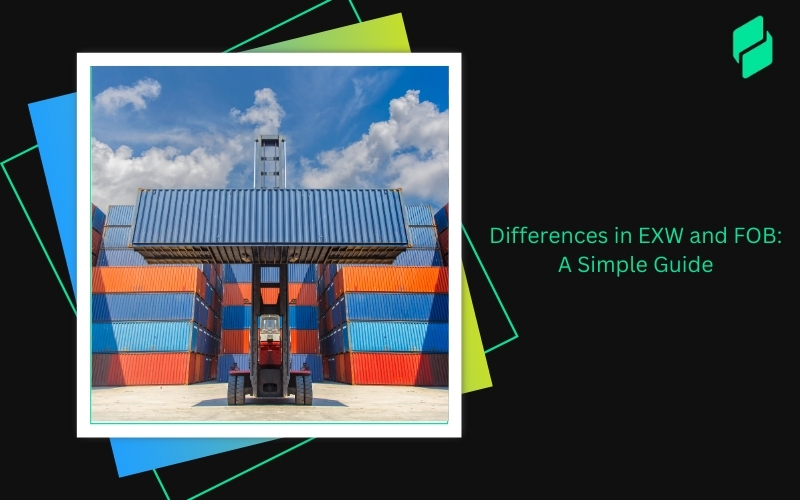Optimize your business: use unlimited savings with Pazago fulfilled now!
Get Started ->Did you know that every year, over 11 billion tons of goods are shipped across the world’s oceans, averaging 1.5 per person? That’s an incredible amount of trade moving across the globe! From electronics and textiles to automobiles and food products, businesses around the world rely on freight transport to keep goods moving across borders.
Whether you're sending goods across continents or receiving raw materials for manufacturing, freight shipping keeps businesses running smoothly. For Indian exporters, choosing the right freight method can mean the difference between profitable trade and unexpected delays.
This guide will cover everything you need to know about freight shipping, including what it is, how it works, different transport modes, cost factors, and key benefits. By the end, you'll have a clear understanding of how to move goods efficiently and make better shipping decisions.
What is Freight & Freight Shipping?

When businesses transport goods in bulk, the shipment is referred to as freight. Unlike parcels, which are smaller packages sent through courier services, freight typically involves large quantities of goods transported over long distances. Freight shipping is the process of moving these goods from one location to another using various transport modes like sea, air, road, and rail. It is widely used by manufacturers, wholesalers, retailers, and businesses involved in global trade.
Key Differences Between Freight and Regular Shipping
Now that we've defined freight shipping, let's explore the key advantages it offers businesses involved in international trade.
Also Read: International Freight Shipping: Definition And Key Stages
Benefits of Freight Shipping

Freight shipping provides many benefits, which is why it's the go-to option for businesses engaged in international trade. Here are the main benefits:
- Cost Savings: Freight shipping is generally more affordable for large volumes, especially with sea and rail transport. By shipping in bulk, businesses can reduce per-unit costs significantly.
- Global Reach: Freight shipping connects businesses to global markets. With the right shipping strategy, goods can be moved between continents, allowing businesses to reach international customers and suppliers.
- Flexibility: Freight shipping provides several options for different needs: air freight for speed, sea freight for bulk, and road or rail freight for regional transport. This flexibility helps businesses select the most efficient and cost-effective methods.
- Security: Freight shipping generally ensures better protection for goods, especially valuable or fragile items. Using reliable carriers and opting for insurance provides peace of mind during the shipping process.
With a clear understanding of the benefits, let's take a closer look at how the entire freight shipping process works, from start to finish.
Also Read: Guide to Various Types of Freight and Shipping Charges
How Freight Shipping Works

Freight shipping isn't just about moving goods from one place to another. It involves multiple steps, from booking and documentation to customs clearance and final delivery. Understanding these steps can help exporters avoid delays, reduce costs, and ensure smooth shipments. Here's a step-by-step breakdown of how freight shipping works:
- Booking a Shipment
Before anything moves, businesses need to book space for their goods with a shipping provider or a freight forwarder. This step involves:
- Choosing a transport mode (sea, air, road, or rail).
- Getting a freight quote based on weight, volume, and destination.
- Deciding on service type (full container load (FCL) or less than container load (LCL) for sea freight, express or standard for air freight, etc.).
- Confirming pickup and delivery locations.
A freight forwarder or logistics provider usually assists in finding the best shipping options and rates.
- Packaging and Labeling
Proper packaging protects goods from damage, moisture, and rough handling during transport. Freight packaging often includes:
- Wooden crates or pallets for stability.
- Shrink wrap and cushioning materials for delicate items.
- Heavy-duty cartons for smaller shipments.
Each package must have a shipping label with details like:
- Sender and receiver information
- Tracking number or reference code
- Handling instructions (e.g., fragile, keep dry, upright, etc.)
- Documentation & Customs Clearance
Documentation is one of the most important aspects of freight shipping. If any paperwork is missing or incorrect, it can result in customs delays, fines, or even your shipment being rejected. Essential documents include:
- Bill of Lading (BOL): A contract between the shipper and carrier stating the type, quantity, and destination of goods.
- Commercial Invoice: Lists the value of goods for customs purposes.
- Packing List: Details of what's inside the shipment.
- Import/Export Permits: Required for restricted goods.
For international shipments, customs clearance is necessary at both the origin and destination ports. Customs officers check the paperwork, verify duties and taxes, and inspect goods if needed.
- Transportation & Tracking
Once cleared, the shipment moves to its destination. The transport phase includes:
- Loading goods onto the carrier (ship, plane, truck, or train).
- Real-time tracking through GPS or freight management systems.
- Mid-transit storage (if needed) at logistics hubs or warehouses.
Some shipments pass through transshipment points, where goods are moved from one mode of transport to another. For instance, a sea shipment may first reach a port and then continue inland by truck or rail.
- Final Delivery
Once the shipment reaches its destination, it goes through the last-mile delivery process. Depending on the agreement, this could mean:
- Door-to-door delivery (from the port/airport directly to the buyer).
- Warehouse delivery (where the buyer picks it up).
Final delivery depends on the Incoterms (International Commercial Terms) set between the buyer and seller, which define who handles costs and risks at different points in the journey.
Understanding the process is essential, but the next step is choosing the right mode of transport. Let's explore the different freight shipping modes and how they affect your decision-making.
Also Read: Best Practices for Customs Documentation and Labeling for International Shipments
Freight Shipping Modes

Choosing the right shipping mode is one of the most important decisions when it comes to freight shipping. It depends on several factors like cost, urgency, and the type of goods being shipped. Freight shipping can be done through four primary modes: sea, air, road, and rail. Let's break down each mode and explore when they are best used for Indian exporters.
- Sea Freight
Sea freight is one of the most popular and cost-effective ways of shipping large quantities of goods. It's especially useful for international shipments that involve heavy or bulky items.
Advantages:
- Cost-Effective: Sea freight is more affordable than air freight, particularly when shipping large or heavy items.
- Capacity: Ships can carry a wide variety of goods, including bulk items, containers, and oversized cargo.
- Global Reach: Sea freight is ideal for shipments across long distances, especially to or from India's busy ports like Mumbai, Chennai, and Kolkata.
Key Considerations:
- Longer transit time: Sea freight can be slow, so it's not suitable for time-sensitive shipments.
- Port accessibility: If your destination doesn't have a seaport, this mode may not be an option.
- Air Freight
Air freight is the fastest way to transport goods internationally. It's ideal for high-value, small-volume, or time-sensitive shipments.
Advantages:
- Speed: Air freight is the quickest shipping option, reducing transit time to days instead of weeks.
- Reliability: Air shipments are less likely to be delayed due to weather or congestion.
- Security: Goods are generally safer, with lower chances of damage or theft.
Key Considerations:
- Higher cost: Air freight tends to be pricier compared to sea or road freight, which makes it less ideal for shipping large or bulky items.
- Size and weight limitations: Airplanes have strict weight and size restrictions, so large shipments may not be eligible for air transport.
- Road Freight
Road freight involves transporting goods via trucks or lorries, making it ideal for domestic shipments or cross-border deliveries between neighboring countries.
Advantages:
- Flexibility: Road freight offers door-to-door delivery, which is convenient for businesses shipping goods within India or to nearby countries like Nepal, Bangladesh, and Pakistan.
- Cost-Effective for Short Distances: Road transport is usually cheaper than air freight for regional deliveries.
- Accessibility: It's suitable for areas that don't have access to rail or seaport infrastructure.
Key Considerations:
- Traffic and road conditions: Poor infrastructure or heavy congestion can cause delays.
- Limited for long-distance international shipping, especially if crossing oceans or large distances.
- Rail Freight
Rail freight involves transporting goods via trains, and it's often used for long-distance domestic or cross-border trade within regions like Europe, Central Asia, and parts of India.
Advantages:
- Affordable for heavy cargo: Rail is a cost-effective option for bulk goods, especially overland.
- Environmentally Friendly: Rail transport produces lower carbon emissions than trucks.
- Large Cargo Capacity: Trains can carry large quantities of goods over long distances.
Key Considerations:
- Limited Coverage: Rail routes are fixed, and not every destination may be accessible by train.
- Speed: Rail is slower compared to air freight, though faster than road freight over long distances.
Choosing the Right Freight Shipping Mode
The decision about which mode of freight shipping to use depends on the following:
- Urgency: If you need your goods urgently, air freight is the fastest. If time isn't an issue, sea freight may be more affordable.
- Volume and Weight: For bulk shipments, sea or rail may be the most economical. For smaller shipments, air freight or road freight could be better options.
- Cost Considerations: Sea freight tends to be the most cost-effective for large cargo, while air freight is pricier but faster.
- Destination: If you're shipping internationally, you'll need to check if the destination has access to ports or airports or if road or rail is the best choice.
Now that you know about the various shipping modes, let's explore how Pazago improves and simplifies these processes for better results.
Also Read: Modes and Role of Transportation in Supply Chain Management
How Pazago Optimizes Freight Shipping

Managing freight shipping can be complex, involving various stakeholders, regulations, and documents. Pazago offers a range of features designed to simplify and enhance the entire shipping experience, from documentation to logistics and payments.
- Centralized Document Management: Pazago centralizes all export documents, allowing easy creation, storage, and sharing of key files like invoices and certificates, ensuring quick access and efficient management.
- Easy Collaboration: Collaborate effortlessly with freight forwarders, customs agents, and buyers on Pazago's platform.
- Affordable Logistics: Pazago offers cost-effective cross-border logistics, optimizing shipping routes for timely delivery and minimal delays.
- Real-Time Shipment Tracking: Track your shipments in real-time, staying informed and in control at every stage of the journey.
- Fast Secure Payments: Simplify payments, currency conversions, and financing, reducing risks and improving transparency in export transactions.
- Quality Inspections: Manage quality inspections to ensure goods meet global standards, avoiding delays and rejections.
With a growing network of carriers, Pazago continues to expand its offerings, making it easier for businesses to manage both local and international freight.
Conclusion
Freight shipping is a critical part of global trade, enabling businesses to move goods efficiently across borders. By understanding the shipping process, the different modes available, and the factors influencing costs, exporters can make smarter decisions to optimize their operations.
Pazago simplifies the complexities of freight shipping by offering features such as centralized document management, real-time shipment tracking, and improved collaboration, all designed to increase efficiency and reduce costs.
To improve your shipping process and streamline your logistics, try Pazago today and optimize your freight management. Book a demo now!


.png)








